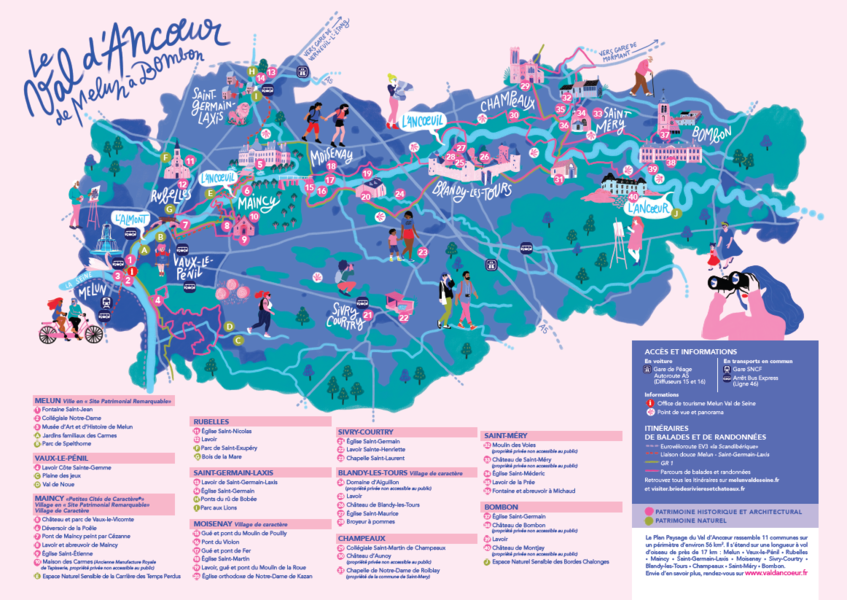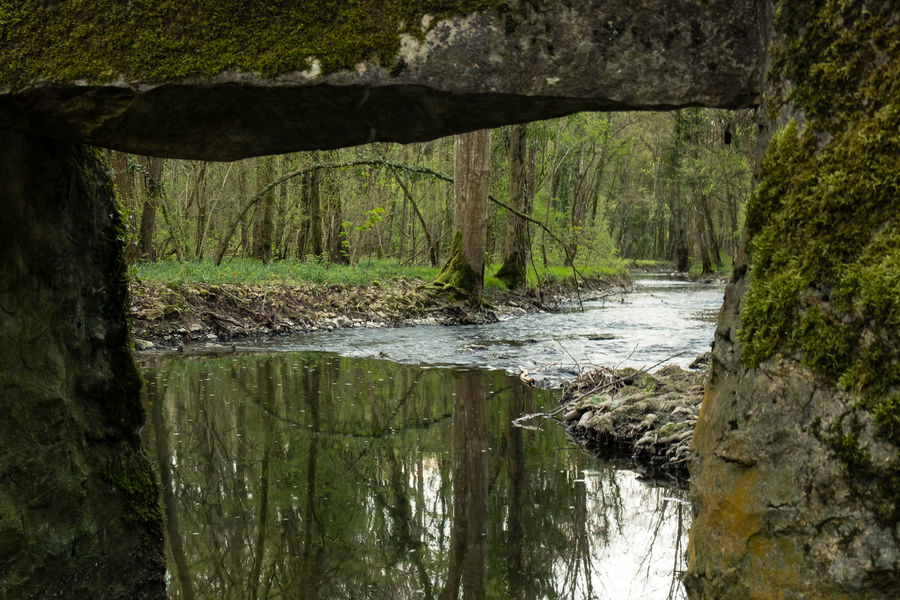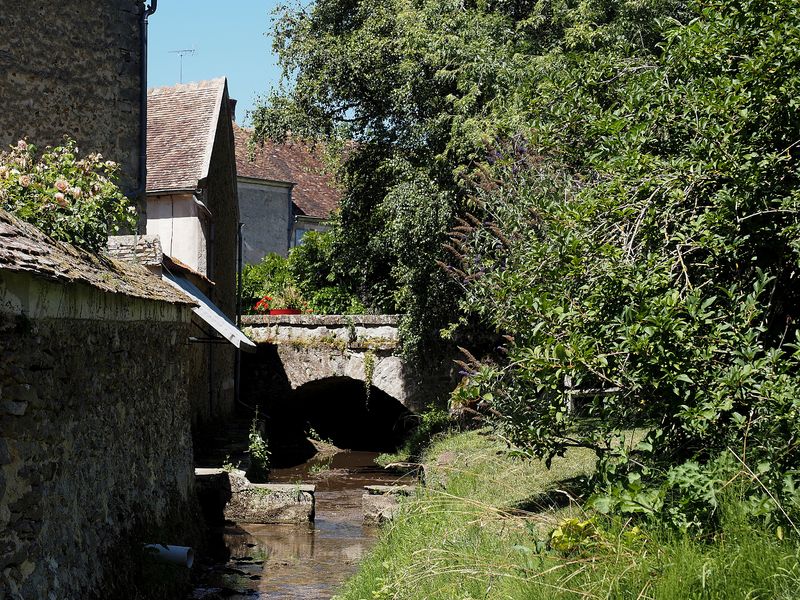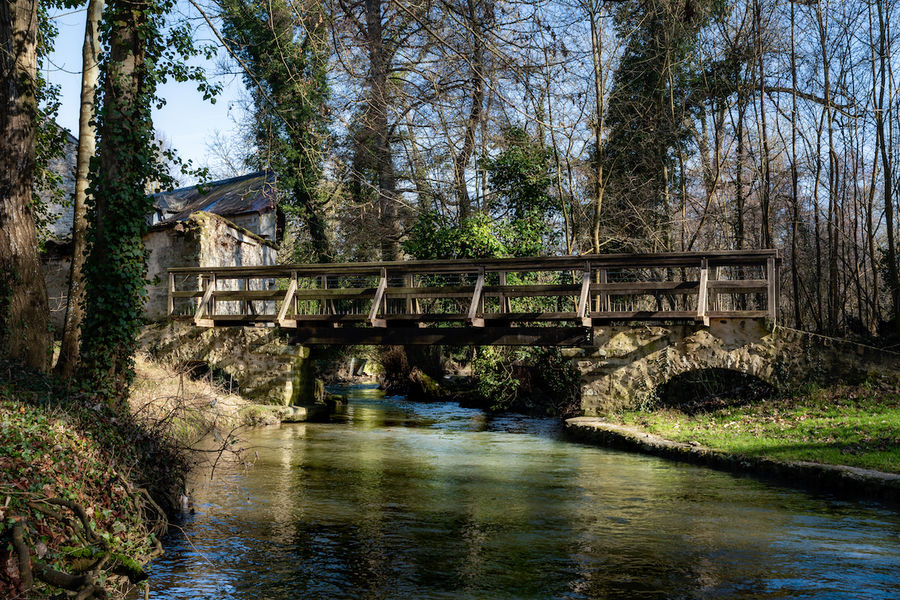Val d'Ancoeur: listed site
The story begins like a fairy tale: "Once upon a time, there was the Val d'Ancœur..." with its castles, its legends and the 3 names of this small stream, which has become a myth, from Ancœur to Ancoeuil and ends in Almont... before flowing into the Seine.
(extract from the Archives Départementales website)
The ru d'Ancoeur is a watercourse which rises in the commune of Grandpuits-Bailly-Carrois at an altitude of 125 m. It then takes the name of "Ancoeuil" in the commune of Moisenay and, after a journey of 25 km from its source, flows into the Bassin de la Poële at the Château de Vaux-le-Vicomte. At the end of this basin, it flows into the Almont 5 km downstream into the Seine at Melun. Together with its tributaries, it forms a catchment area of approximately 306 km².
The ru d'Ancoeur flows through the municipalities of Grandpuits-Bailly-Carrois, La Chapelle-Gauthier, Bréau, Bombon, Saint-Méry, Blandy-les-Tours, Moisenay, Maincy and Melun.
Classified as an "Exceptional Site" since 14 October 1985 by the Direction Régionale et Interdépartementale de l'Environnement et de l'Energie d'Île-de-France, the ru d'Ancœur offers enchanting landscapes. The listed site covers 1861 hectares.
Along its watercourses - the Almont, the Ancoeuil (or Ancueil) and then the Ancoeur - the Val d'Ancœur offers panoramic views: villages, forests, châteaux (Vaux-le-Vicomte, Blandy-Les-Tours, etc.) and, at the confluence with the Seine, urbanised areas.
"The Ancoeur is a river with very little water, very irregular and in danger of running dry on a regular basis. The water level in its catchment area is 96 millimetres a year, which is one of the lowest in France, more than three times lower than the average for the country as a whole, and above all well below the average for the whole of the Seine basin (around 240 millimetres). For centuries, however, the constant flow of the river Ancoeur has enabled numerous mills to operate. The large number of hydraulic structures, such as canals, basins and ponds, small reservoirs and mills, give the landscape a distinctive identity based on water and its control. This is linked to the wet nature of the land.
A place where people live, produce and create, the Val d'Ancoeur is home to a number of major heritage sites throughout the area: churches and works of art dating back to the 12th century, castles, farms, mills, rural housing, small-scale rural heritage, and so on.
It has also become a subject of reflection and aesthetic admiration thanks to the artists who have seized upon its beauty to interpret it in their own way.
- L'Ancueil ("Anqueil" in its 17th-century spelling), for example, gave its name to a majestic statue in the grounds of Vaux-le-Vicomte located to the left of the grotto complex (1659-1662), facing the Tiber installed to the right in 1659.
- In 1879, the painter Paul Cézanne immortalised the Pont de Maincy (preserved at the Musée d'Orsay).
- And sculptor Auguste Rodin devoted some superb drawings to the Collegiate Church of Champeaux (1890-1917), testifying to his admiration.
For several years now, the Communauté de Communes Brie des Rivières et Châteaux and the Communauté d'Agglomération Melun Val de Seine have been working together to draw up a Landscape Plan to highlight the assets of the Val d'Ancoeur. An opportunity to protect and enhance the landscape heritage. The perimeter of the listed site covers 11 communes in an area of around 56 km². As the crow flies, it is almost 17 km long.
The ru d'Ancoeur is a watercourse which rises in the commune of Grandpuits-Bailly-Carrois at an altitude of 125 m. It then takes the name of "Ancoeuil" in the commune of Moisenay and, after a journey of 25 km from its source, flows into the Bassin de la Poële at the Château de Vaux-le-Vicomte. At the end of this basin, it flows into the Almont 5 km downstream into the Seine at Melun. Together with its tributaries, it forms a catchment area of approximately 306 km².
The ru d'Ancoeur flows through the municipalities of Grandpuits-Bailly-Carrois, La Chapelle-Gauthier, Bréau, Bombon, Saint-Méry, Blandy-les-Tours, Moisenay, Maincy and Melun.
Classified as an "Exceptional Site" since 14 October 1985 by the Direction Régionale et Interdépartementale de l'Environnement et de l'Energie d'Île-de-France, the ru d'Ancœur offers enchanting landscapes. The listed site covers 1861 hectares.
Along its watercourses - the Almont, the Ancoeuil (or Ancueil) and then the Ancoeur - the Val d'Ancœur offers panoramic views: villages, forests, châteaux (Vaux-le-Vicomte, Blandy-Les-Tours, etc.) and, at the confluence with the Seine, urbanised areas.
"The Ancoeur is a river with very little water, very irregular and in danger of running dry on a regular basis. The water level in its catchment area is 96 millimetres a year, which is one of the lowest in France, more than three times lower than the average for the country as a whole, and above all well below the average for the whole of the Seine basin (around 240 millimetres). For centuries, however, the constant flow of the river Ancoeur has enabled numerous mills to operate. The large number of hydraulic structures, such as canals, basins and ponds, small reservoirs and mills, give the landscape a distinctive identity based on water and its control. This is linked to the wet nature of the land.
A place where people live, produce and create, the Val d'Ancoeur is home to a number of major heritage sites throughout the area: churches and works of art dating back to the 12th century, castles, farms, mills, rural housing, small-scale rural heritage, and so on.
It has also become a subject of reflection and aesthetic admiration thanks to the artists who have seized upon its beauty to interpret it in their own way.
- L'Ancueil ("Anqueil" in its 17th-century spelling), for example, gave its name to a majestic statue in the grounds of Vaux-le-Vicomte located to the left of the grotto complex (1659-1662), facing the Tiber installed to the right in 1659.
- In 1879, the painter Paul Cézanne immortalised the Pont de Maincy (preserved at the Musée d'Orsay).
- And sculptor Auguste Rodin devoted some superb drawings to the Collegiate Church of Champeaux (1890-1917), testifying to his admiration.
For several years now, the Communauté de Communes Brie des Rivières et Châteaux and the Communauté d'Agglomération Melun Val de Seine have been working together to draw up a Landscape Plan to highlight the assets of the Val d'Ancoeur. An opportunity to protect and enhance the landscape heritage. The perimeter of the listed site covers 11 communes in an area of around 56 km². As the crow flies, it is almost 17 km long.
Tarifs
Free access.
Prestations, conforts et services
- Langues parlées :
- French
Périodes d'ouverture
All year round.
















Leaflet | © OpenStreetMap contributors




